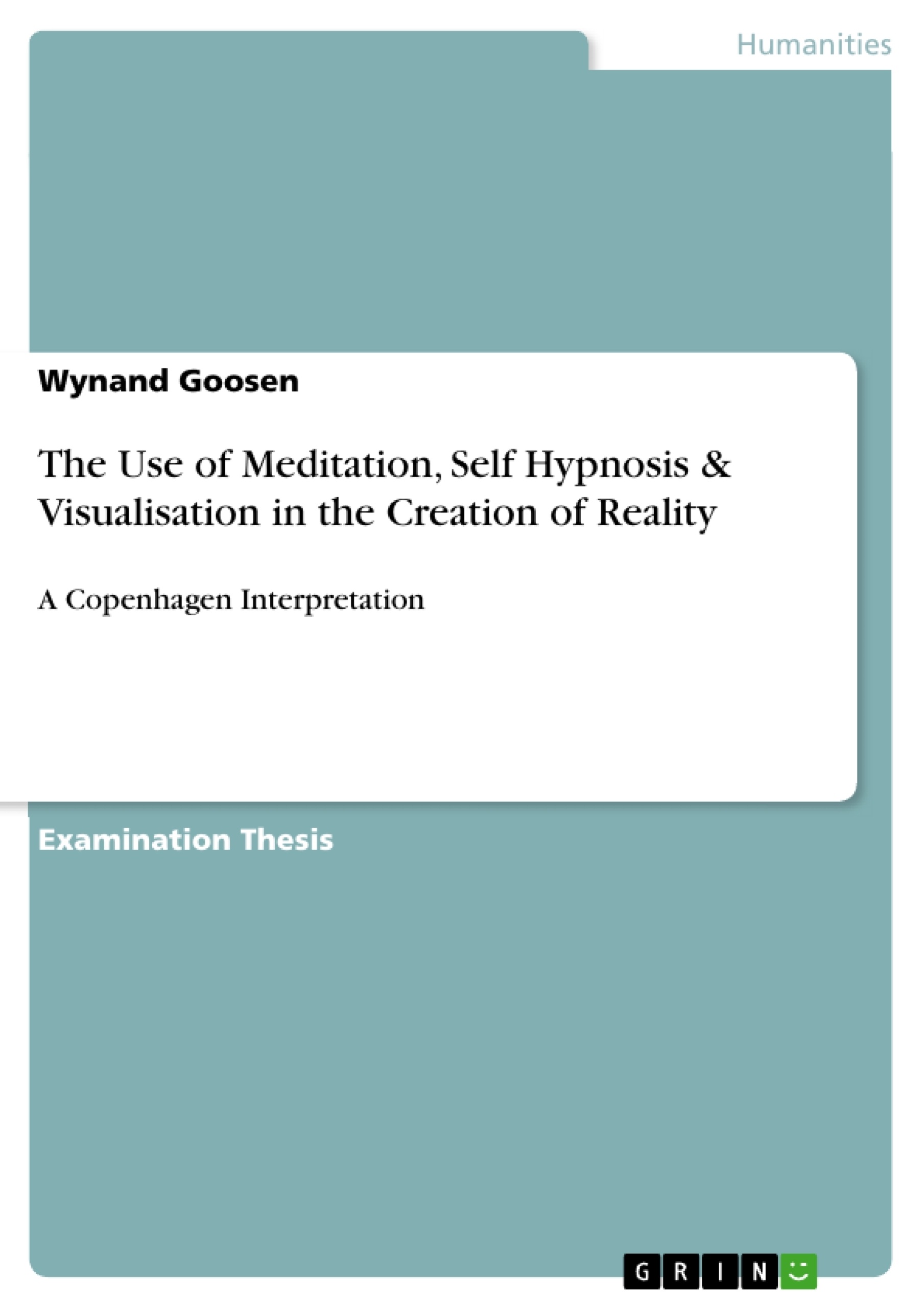According to Arntz (2008 : 76), the observer has an inescapable influence on any
observed physical process. The believe that we are not neutral, objective
witnesses to things and events was first insisted upon by Niels Bohr and his
colleagues in Copenhagen where Bohr lived; thus its often called the
Copenhagen interpretation (Arntz, 2008: 76). This Copenhagen principle, from
quantum physics, suggests that the smallest part of matter, called a particle,
behaves in a fashion based on the consciousness of the observer. For example,
if a particle is observed, the behaviour of such a particle is determined based on
what the observer thinks. Science is therefore suggesting that our thoughts as
humans are the determining factor in the creation of reality.
From the metaphysical perspective, Bob Proctor, philosopher, is quoted in Byrne
(2006: 3) as saying that we all work with one infinite power - we all guide
ourselves by the exact same law of the universe – the law of attraction. Proctor
believes that everything in your life that comes your way comes because of the
law of attraction. It is attracted to you by virtue of the images you are holding in
your mind. The images in your mind or visions in your mind, is thus the basis of
creation of your reality. What you think determines your reality. The credibility of
authors such as Proctor is supported in the work of Byrne (2006:7) by other
authors as John Assaraf, Bob Doyle, Mike Dooley and many others. All of these
authors support the notion that we can create whatever we hold in our minds as a
powerful enough vision. This notion is also supported by the Bible when it states “
as you believe, so shall it be”. In this study the routes to the development of this
“visioning” is analysed and compared. For purposes of this study these routes
are defined as meditation, self-hypnosis and visualisation. The routes are
compared and analogies drawn.
Meditation is described by Masters (1973: 1) a process whereby an individual
reaches an ultimate level of relaxation, with the objective of engaging in
affirmations, or the keep your intentions in the interior centre of your forehead –
your mind’s eye or eye of the soul.[...]
Inhaltsverzeichnis (Table of Contents)
- Chapter One: Orientation
- 1.1 Introduction
- 1.2 Identification of the problem
- 1.3 The objectives of this study
- 1.4 Method of study
- 1.5 Scope of the study
- 1.6 Chapter outline
- Chapter Two: Review of Literature
- 2.1 Meditation
- 2.2 Visualisation
- 2.3 Self-hypnosis
- 2.3.1 Definitions
- 2.4 Summary
- Chapter Three: Findings and Results
- 3.1 Meditation
- 3.1.1 Application & use of meditation
- 3.1.2 Results & Outcomes of literature review
- 3.1.3 Application
- 3.2 Visualisation
- 3.2.1 Results & outcomes
- 3.2.2 Application of visualisation
- 3.2.3 Results & outcomes
- 3.3 Self-hypnosis
- 3.3.1 Application
- 3.4 The similarities & interrelationship of the above
- 3.5 Reality creation using meditation, visualisation & self-hypnosis
- Chapter Four: Discussion
- 4.1 Creating new reality - the observer universe
- 4.1.1 The Copenhagen principle & metaphysics
- 4.1.2 The observer universe, the God Mind and metaphysics
- 4.2 Potential new applications
- 4.3 Impact & effects on society
- 4.4 Visio meditation as new metaphysical instrument
- 4.4.1 Distinguishing features of Visio Meditation
- 4.4.2 The Visio Meditative state of consciousness & quantum physics
- 4.5 Development of a new model for therapeutic applications
Zielsetzung und Themenschwerpunkte (Objectives and Key Themes)
This thesis explores the potential of using meditation, self-hypnosis, and visualization to create reality in an observer universe. The study aims to provide a comprehensive understanding of these techniques and their interrelationship in the context of metaphysics and quantum physics.- The role of the observer in shaping reality
- The intersection of metaphysics and quantum physics
- The practical application of meditation, self-hypnosis, and visualization in personal and societal contexts
- The potential for developing new therapeutic models based on these techniques
- The development of Visio meditation as a novel metaphysical instrument
Zusammenfassung der Kapitel (Chapter Summaries)
- Chapter One: Orientation provides an overview of the study, including its objectives, scope, and methodology.
- Chapter Two: Review of Literature explores the existing literature on meditation, visualization, and self-hypnosis. It delves into the definitions and historical contexts of these techniques.
- Chapter Three: Findings and Results presents the findings of the literature review, examining the applications, results, and outcomes of each technique. It explores the similarities and interrelationships between meditation, visualization, and self-hypnosis in relation to reality creation.
- Chapter Four: Discussion delves into the concept of creating new reality within the observer universe, exploring the Copenhagen principle and its connection to metaphysics. It discusses potential applications, societal impacts, and the development of Visio meditation as a new metaphysical instrument.
Schlüsselwörter (Keywords)
This study focuses on the intersection of metaphysics and quantum physics, exploring the potential of meditation, self-hypnosis, and visualization as tools for creating reality in an observer universe. Key terms include: observer universe, Copenhagen interpretation, metaphysics, meditation, visualization, self-hypnosis, reality creation, Visio meditation, therapeutic applications, societal impacts.- Arbeit zitieren
- Dr. Wynand Goosen (Autor:in), 2008, The Use of Meditation, Self Hypnosis & Visualisation in the Creation of Reality, München, GRIN Verlag, https://www.grin.com/document/214654



